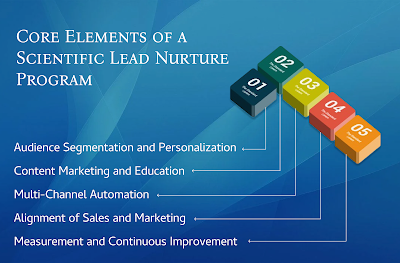In today's cutthroat B2B environment, it is vital to generate high-quality leads from b2b content syndication channels if one is to achieve anything resembling a good return on investment and to ensure that sales teams concentrate on prospects that are likely to buy. Content syndication can work wonders, but only when it is executed thoughtfully and when the true value of leads is filtered and prioritized.
Understanding
B2B Content Syndication and Its Role in Lead Qualification
Content syndication
in B2B is when you share content, like webinars or case studies, with another
platform to reach a larger, still targeted, audience. That could mean putting
your content on a partner's website, with a PR agency, or even in Google Ads (as
an example). You do this to be seen by more of the right people and, in theory,
get more of the right kinds of leads. Mission accomplished years ago when the
bar was lower and the lead qualification processes weren't as strong.
Steps to Qualify
Leads Effectively
1. Define Your
Ideal Customer Profile (ICP)
Begin with a clear
definition of the traits of the firms and decision-makers that would most
benefit from your solution. This spans things like industry, company size, job
title, and other firmographic data. A narrowly defined ideal customer profile
makes it possible to tweak both content and syndication strategy to attract the
right leads right from the get-go.
2. Leverage
Account-Based Marketing (ABM) for Precision
Engaging in content
syndication while using ABM lead generation
tactics allows you to target specific, high-value accounts instead of a broad
audience. By netting only those accounts that are a match for your ideal
customer profile, you greatly increase your chances of landing leads that are
both relevant to your business and primed to convert. This is because ABM also
supports the creation of personalized content, which resonates more deeply with
target accounts, thereby enhancing engagement and qualification rates.
3. Use Intent
Data and Behavioral Insights
Today's lead
qualification is heavily influenced by data. Account based marketing
uses some of the most valuable data you can get your hands on: intent data.
This is the information you have about a prospect's online behavior and content
consumption—what they are doing and not doing. When we look at the intent data
of all the different leads out there and then use that to qualify leads, we
find that it is a much better way of doing things. Companies using
account-based marketing and with a pervasive lead qualification strategy in
place that uses intent data are seeing much better results.
4. Implement
Lead Scoring and Nurturing
Not all leads are
equal. Develop a lead scoring model that incorporates both demographic (fit)
and behavioral (intent) criteria. Leads that score highly on both fronts should
be fast-tracked to sales, while others may require further nurturing through targeted
email campaigns or additional content offers.
Setting up a
nurture series ensures that leads who are not yet sales-ready continue to
engage with your brand, increasing their likelihood of conversion over time.
5. Collaborate
with the Right Syndication Partners
Select content
syndication vendors that provide access to your intended audience, clear and
understandable statistics, and interfaces with your marketing automation
systems. Make sure these vendors can deliver leads that match your requirements
for quality and support your lead nurturing efforts.
The Future of
Lead Qualification in Content Syndication
The B2B buying
journey is becoming increasingly intricate. But when it comes to content
syndication, we have a typical set of platforms we deal with: ABM and intent
data platforms.
These platforms
should neatly integrate with content syndication. Why? Because they allow us to
do some very awesome stuff with our data.
Content syndication
remains a core tenet of a B2B marketing strategy. And with the right audience
and data in place, you can do some real heavy lifting—content syndication can
truly enable some top-of-the-funnel marketing automation.
By uniting
strategic targeting, data-informed insights, and ongoing nurturing,
organizations can turn their content distribution channels into a dependable
source of high-quality leads and consistent business growth.
Conclusion
Leads from b2b content syndication
channels qualify when precise targeting meets robust qualification criteria and
ongoing engagement tracking. Marketers collect intent data and integrate lead
generation strategies to ensure their syndicated content doesn't just deliver
volume but, instead, delivers high-intent, sales-ready leads that drive growth.
For Other
Information
How B2B Intent Data Can Help Shorten Your
Sales Cycle
How to Measure Success in a B2B Content
Syndication Campaign
Why B2B Marketers Trust Intent Data
Providers for Better Targeting
How Intent Data Platforms Boost B2B
Demand Generation




















